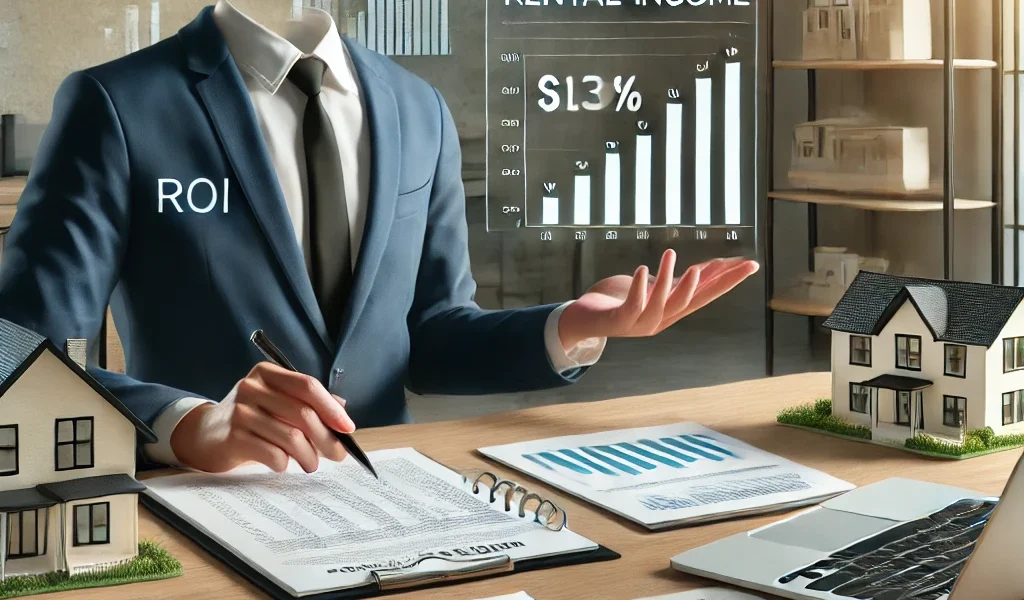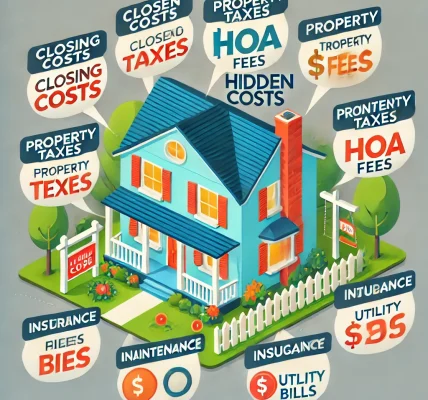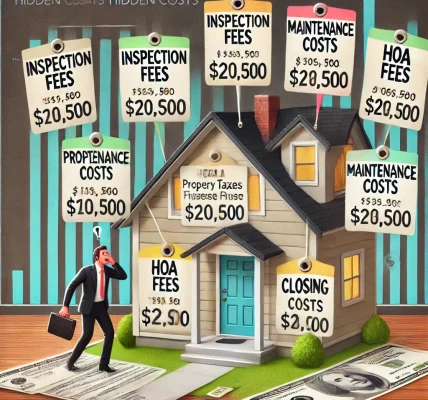Introduction
Investing in rental properties can be a lucrative way to generate passive income and build wealth over time. However, not every property guarantees high returns. A smart investor must analyze multiple factors before purchasing a rental property to ensure maximum Return on Investment (ROI).
This DIY guide will walk you through the essential steps to evaluate rental properties, minimize financial risks, and maximize long-term profitability.
1. Understanding ROI in Rental Properties
ROI (Return on Investment) is a metric used to evaluate the profitability of a rental property. It is calculated as: ROI=(NetProfitTotalInvestment)×100ROI = \left( \frac{Net Profit}{Total Investment} \right) \times 100ROI=(TotalInvestmentNetProfit)×100
Where:
- Net Profit = Annual Rental Income – Expenses
- Total Investment = Purchase Price + Renovations + Closing Costs
A higher ROI means a more profitable investment, but other factors like market trends, property location, and rental demand also play a role.
2. Choosing the Right Location: The Key to Success
A good location increases rental demand and ensures steady cash flow. Before buying a rental property, analyze:
✅ Neighborhood Quality
- Check crime rates, school ratings, and job opportunities.
- Look for areas with strong economic growth.
✅ Rental Demand & Vacancy Rates
- Research the average vacancy rates in the area.
- A high vacancy rate may indicate low demand or seasonal rentals.
✅ Proximity to Amenities
- Properties near public transport, shopping centers, schools, and hospitals attract more tenants.
✅ Future Development Plans
- Check with local authorities for upcoming infrastructure projects that could increase property value.
DIY Tip: Use real estate websites like Zillow, Redfin, or Realtor.com to analyze neighborhood trends and price growth.
3. Evaluating Cash Flow: The Lifeblood of Your Investment
Cash flow refers to the money left after paying all expenses. It is calculated as: CashFlow=TotalRentalIncome−TotalExpensesCash Flow = Total Rental Income – Total ExpensesCashFlow=TotalRentalIncome−TotalExpenses
🔹 Estimating Rental Income
- Check rental listings in the area to compare market rents.
- Use rental platforms like Rentometer to get average rent prices.
🔹 Calculating Expenses
Common property expenses include:
✅ Property Taxes – Check with the local tax authority.
✅ Insurance – Homeowners and landlord insurance.
✅ Maintenance & Repairs – Budget 1-2% of property value per year.
✅ HOA Fees (if applicable) – Some properties have Homeowners Association fees.
✅ Property Management Fees – If hiring a manager, budget 8-12% of rent income.
✅ Vacancy Reserves – Expect occasional tenant turnover.
DIY Tip: Always aim for a positive cash flow property. If expenses exceed rental income, the investment might not be sustainable.
4. Using the 1% Rule for Quick Screening
The 1% Rule helps investors determine if a rental property is worth considering. MonthlyRent≥1%×PurchasePriceMonthly Rent \geq 1\% \times Purchase PriceMonthlyRent≥1%×PurchasePrice
For example, if a property costs $200,000, it should generate at least $2,000 in monthly rent to meet the 1% rule.
DIY Tip: The 1% rule is a quick estimate, but always conduct a detailed analysis before investing.
5. Analyzing Cap Rate: A More Precise Measure of ROI
The Capitalization Rate (Cap Rate) helps measure a property’s profitability excluding mortgage payments. CapRate=(NetOperatingIncomePropertyValue)×100Cap Rate = \left( \frac{Net Operating Income}{Property Value} \right) \times 100CapRate=(PropertyValueNetOperatingIncome)×100
Where:
- Net Operating Income (NOI) = Annual Rental Income – Operating Expenses
- Property Value = Purchase Price
For example, if a property generates $18,000 in annual rental income and expenses are $5,000, the Cap Rate would be: (18,000−5,000200,000)×100=6.5%\left( \frac{18,000 – 5,000}{200,000} \right) \times 100 = 6.5\%(200,00018,000−5,000)×100=6.5%
DIY Tip: A Cap Rate between 5-10% is generally considered good, but it varies by location.
6. Calculating the Cash-on-Cash Return
If you’re financing the property with a mortgage, the Cash-on-Cash Return provides a better profitability estimate. Cash−on−CashReturn=(AnnualPre−TaxCashFlowTotalCashInvested)×100Cash-on-Cash Return = \left( \frac{Annual Pre-Tax Cash Flow}{Total Cash Invested} \right) \times 100Cash−on−CashReturn=(TotalCashInvestedAnnualPre−TaxCashFlow)×100
Where:
- Pre-Tax Cash Flow = Cash Flow after mortgage payments.
- Total Cash Invested = Down Payment + Closing Costs + Renovations.
A higher Cash-on-Cash return means better returns on your investment.
7. Considering Long-Term Appreciation
Rental income is important, but property appreciation can increase your wealth over time.
Factors That Influence Appreciation:
✅ Location & Demand – High-demand areas appreciate faster.
✅ Infrastructure Growth – New roads, malls, and public transport boost property value.
✅ Supply & Demand – Limited housing supply leads to price appreciation.
DIY Tip: Use online real estate appreciation calculators to estimate potential growth over the next 5-10 years.
8. Financing Options & Interest Rate Impact
A good financing strategy can maximize profits while keeping risks low.
🔹 Mortgage Loan Types
- Fixed-Rate Mortgage – Predictable payments over time.
- Adjustable-Rate Mortgage (ARM) – Low initial rates but fluctuating costs.
- Conventional Loans vs. FHA Loans – FHA loans require lower down payments but have stricter conditions.
🔹 Interest Rate Considerations
Higher interest rates increase mortgage payments, reducing cash flow. Before financing, compare multiple lenders and secure the lowest rate possible.
9. Risk Management: Avoiding Common Pitfalls
Even well-analyzed properties can carry risks. Here’s how to mitigate them:
❌ Overestimating Rental Income
🔹 Solution: Use conservative estimates and study rental trends.
❌ Ignoring Maintenance & Vacancy Costs
🔹 Solution: Maintain emergency reserves for repairs and vacancies.
❌ Buying in a Low-Demand Area
🔹 Solution: Research neighborhood trends before investing.
Conclusion: Smart Analysis Leads to Maximum ROI
Analyzing rental properties is more than just looking at rental income—it requires evaluating expenses, location, appreciation potential, and financing options.
Key Takeaways
✔️ Check market trends, neighborhood quality, and rental demand.
✔️ Use the 1% Rule and Cap Rate for quick screening.
✔️ Factor in all expenses, including taxes, insurance, and repairs.
✔️ Ensure positive cash flow and a sustainable financing plan.
✔️ Plan for property appreciation for long-term growth.
By following this DIY guide, you can make data-driven investment decisions and maximize your ROI in rental properties.
Final Thought:
What’s your biggest challenge when analyzing rental properties? Drop your thoughts in the comments below!




